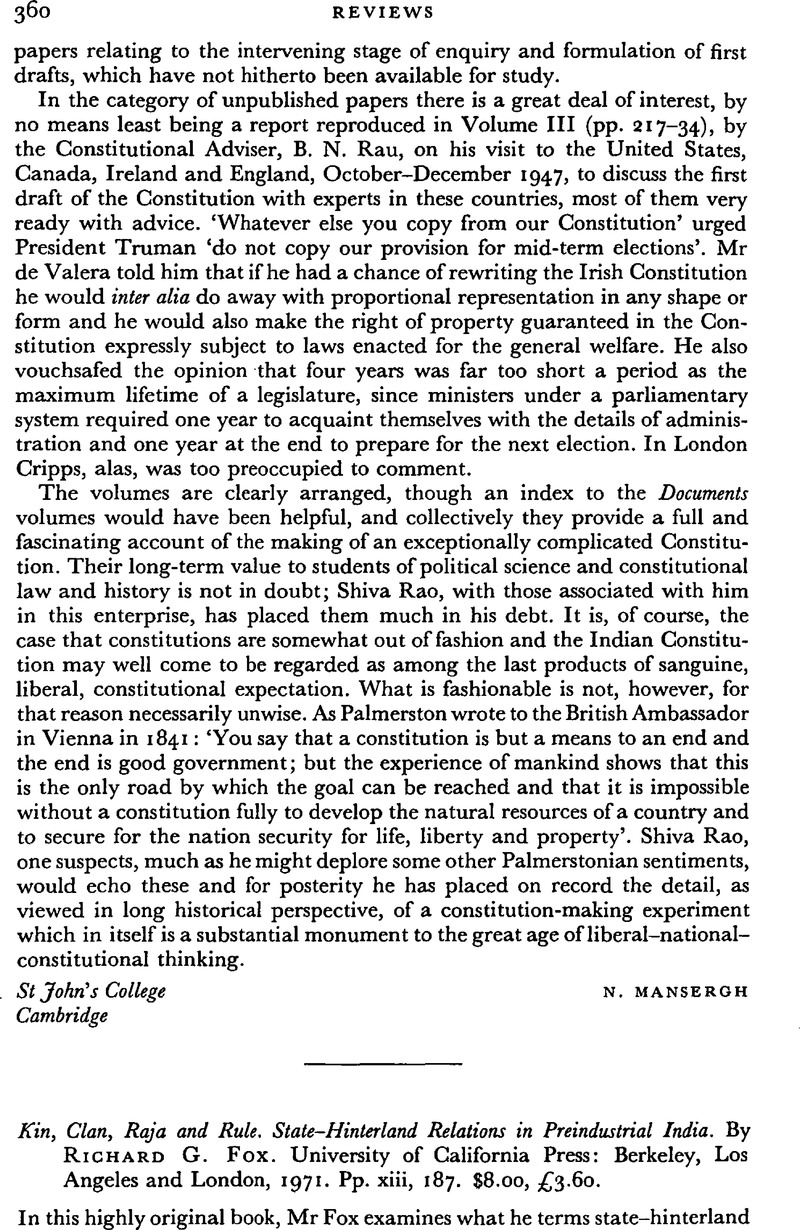Published online by Cambridge University Press: 28 November 2008

1 Mr Fox makes a terminological distinction between ‘lineage’, which he sees as a genuine genealogical category, and ‘clan’ which is composed of separate lineages which claim a sometimes fictive relationship with each other. I have tried to maintain his distinction in this review.
2 For implications of the difficulty of reconstructing historical fact from Rajput genealogical histories see Shah, A. M. and Shroff, R. G., ‘ The Vahivanca Barots of Gujarat: A Caste of Genealogists and Mythographers’, in Singer, M. (ed.), Traditional India: Structure and Change (Philadelphia, 1959), pp. 30–70.Google Scholar
3 The estate was ‘without visible and responsible owners’. Uttar Pradesh Archives, Board of Revenue, Partabgarh, file 218 (1863), p. 35. I owe this reference to Mr P.J. Musgrave.
4 Of the kind of analysis of tenures found in British Settlement Reports and other official documents, on which Mr Fox basis so much of his book, Baden-Powell said, ‘What I have to point out is (i) that these returns [of tenurial categories] are not only quite useless, but distinctly misleading, for any purposes connected with the history of institutions, and as regards the interesting question of the survival of different tribal and family origins of the villages’, [italics in original]. Baden-Powell, B. H., The Indian Village Community (London, 1896), p. 353.Google Scholar
5 Uttar Pradesh Archives, Board of Revenue, Sultanpur, file 3(iii), p. 64. See Musgrave, P. J., ‘Landlords and Lords of the Land’, Modern Asian Studies, 6, 3 (07 1972), p. 267.Google Scholar
6 E.g. the Kurmi revolt in Rae Bareli in the 1720S; see Benett, W. C., A Report on the Family History of the Chief Clans of the Roy Bareilly District (Lucknow, 1870), p. 34.Google Scholar
7 Calculated from Ali, Daroga Haji Abbas, An Illustrated Historical Album of the Rajas and Talugdars of Oude (Allahabad, 1880).Google Scholar